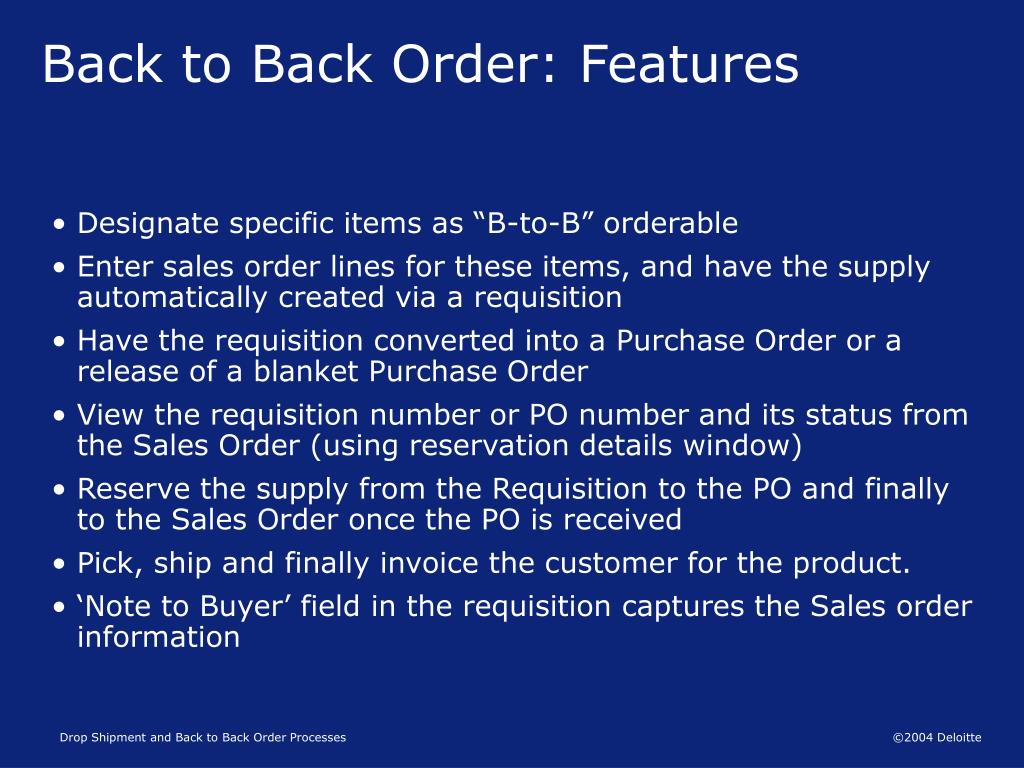
Another concern is that repeated backorders can result in the permanent loss of customer loyalty, who never return to the organization to place orders. This happens because customers are not willing to wait for the firm to deliver backordered goods to them. Disadvantages of BackordersĪ key problem with backorders is that a business is losing sales to its competitors. If customers want to have their orders filled at once, then they will be more likely to place orders with a firm that reports a low backorder rate. A business could use a variety of inventory management techniques to fill a high percentage of its orders within a short period of time, and then market its order fulfillment rate to customers. Having a low backorder percentage can be a competitive advantage. This approach can be especially effective when customer demand is high. Doing so will attract customers who like low prices, and who do not mind waiting a while to obtain the ordered items. Since the presence of backorders reduces the inventory investment and holding costs of a business, this means that the firm could pass these savings through to its customers. The result is a low working capital investment in the business, which makes it easier to operate with a minimal investment. Instead, they wait for customer orders to arrive, take their money, and then produce the goods. The main advantage of backorders is that they allow a business to invest less in inventory. Instead, the backorder is recorded within the firm’s order entry system, which is not related to the accounting system. If customers make no cash payments up-front, then there is no accounting transaction to record. Once the backordered item has been delivered to the customer, the liability is debited (to clear it from the books), and a credit is used to record a sale. When a customer places an order that is placed on backorder, any payment made by the customer is recorded by the seller as a liability. The reverse situation is to stock minimal amounts of inventory and rely upon customers to wait while back ordered items are acquired elsewhere or produced in-house. However, this requires a major investment in inventory, and may result in write-offs related to obsolete goods. For example, if management elects to maintain large stocks of all items offered for sale, then the probability of a stockout condition is low, and there will be few back orders. If not, the back order is cancelled.īack orders are heavily influenced by the inventory stocking policies of a business. Another related metric is the average number of days that a customer must wait before back orders can be filled.Ī more refined form of the back order is to only identify an undelivered item as a back order if a customer agrees to wait for the late delivery. The proportion of customer orders that are on back order is a common customer service metric. Backorders represent any amount of stock a company's customers have ordered but have not yet received because it currently isn't available in stock.A back order is a customer order which the supplier cannot currently ship, but expects to ship at a later date. The higher the number of items back ordered, the higher the demand for the item. The nature of the backorder and the number of items on backorder will affect the amount of time it takes before the customer eventually receives the ordered product.

next generation gaming consoles or new iterations of cell phones) may experience backorders. However, backorders allow for a company to maintain lower levels of inventory, have lower risk of obsolesce and theft, and may result in natural marketing for its highly demanded product.Companies with manageable backorders tend to have high demand, while those that can't keep up may lose customers.A manageable backorder with a short turnaround is a net positive, but a large backorder with longer wait times can be problematic. Backorders give insight into a company's inventory management.A backorder is an order for a good or service that cannot be filled immediately because of a lack of available supply.


 0 kommentar(er)
0 kommentar(er)
